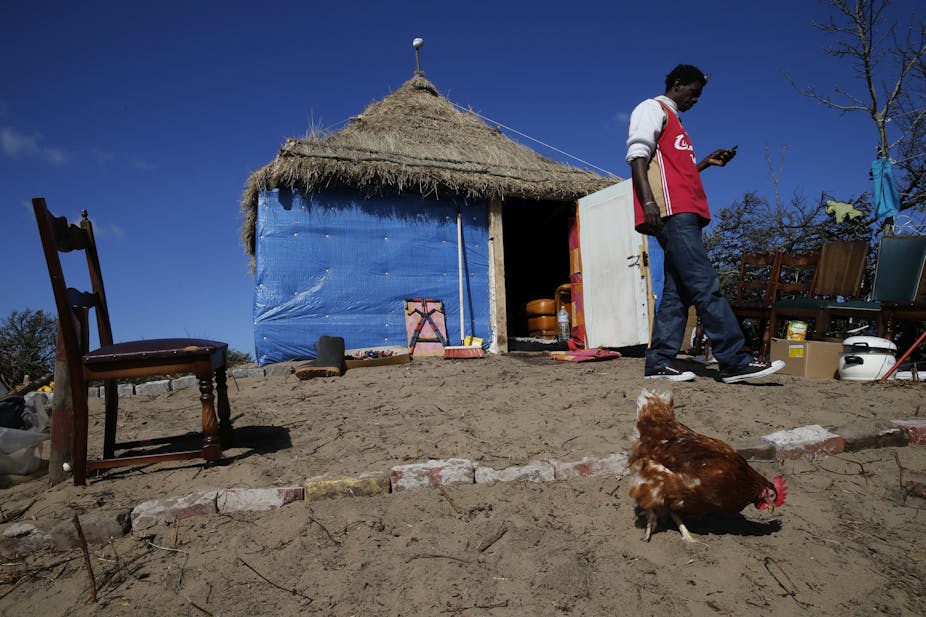Enabling people to move out – and stay out – of poverty is a complex process that requires more than just one intervention. Multiple approaches that take in education, social protection, health and agriculture help cater for different contexts and groups of people.
A popular intervention, adopted in many developing countries, from Bangladesh to Ghana to Mexico, is regular and predictable cash and asset transfers to the poor. This small, regular income transfer directly secures basic food needs. It has an indirect benefit of enabling access to health and education. It also enables poor people to make small investments.
No one perfect package for alleviating poverty exists. But there is some agreement on what the elements should be. The most common packages of support include a combination of a micro-credit component, public works, training, agricultural extension services, financial literacy and links to credit unions. A few have also started to facilitate links to early childhood development and childcare services, such as VUP in Rwanda.
Graduating out of poverty
This focus on building resilience and enabling households to move out of poverty, and out of programme dependence using a number of interventions, has become the driver of a range of new-generation social protection approaches known as graduation programmes.
“Graduation” is the point at which someone is able to exit from a classic safety net programme because their circumstances have improved. This improvement is often measured using indicators such as an increase in assets or level of food security.
But graduating is not simply about exiting a social protection programme. It should not simply be an end in itself. It must be linked to a sustainable and positive change in a person or household’s livelihood.
What’s worked?
Different combinations of support for people in different contexts can have lasting positive impacts on their livelihoods and thus on poverty reduction.
Ethiopia’s Productive Safety Net Programme combines cash and/or food transfers with micro-credit, agricultural extension services including financial literacy training, household asset building and community asset development.
Rwanda has developed a community manual to complement the cash transfer, micro-finance and public works programmes. These are used to provide information about a whole range of issues including rights to social benefits, nutrition, early childhood education, financial planning and livestock care.
Graduation is not for everyone
Graduation programmes are attractive to politicians looking to achieve poverty reduction targets and to donors with fixed budgets looking for exit strategies. But this raises the risk that political pressure to demonstrate success will undermine the fundamental safety net or social insurance function of social protection.
Not all households have the capacity to graduate. Realistic levels of support are not always available and some households are made up entirely of elderly people or those who have no labour capacity due to illness or disability. These households might need long term social assistance and should not be expected to graduate.
But for households with labour capacity, graduation programmes have been shown to have a positive impact in Latin America, Africa and Asia. The non-material benefits, such as improved self-confidence and participation in community activities, often emerge as being equally significant as the impacts on incomes and assets.
The importance of understanding graduation as a sustained improvement in livelihoods over time – rather than simply a movement off a social security programme – has substantial implications for the type of support policymakers and programmes need to provide.
What’s next
The combination and sequence of interventions most likely to promote building livelihoods varies, depending on the context and type of beneficiaries.
In Bangladesh, the most common assets transferred are livestock and land.
In Ethiopia, Household Asset Building Packages support a number of occupations, such as beekeeping.
In Burundi, households receive a cash lump sum as working capital to invest.
There are also operational challenges to creating and implementing sustainable graduation packages. While the starting point is defining eligibility and identifying participants, choosing the right assets to transfer is equally important.
Participants must have the skills and means to manage their assets. A package of support, including some chickens and supplies, may be suitable for a farmer with land yet totally unsuitable for someone who raises livestock. There is a need to understand the best combinations of support for people in different contexts, and the best ways to build links and make the most of overlap across different sectors.
One graduation project in Honduras gave chickens to participants. Most of the chickens died in a poultry epidemic, leaving many participants worse off than before the project.
Co-ordinating policies within and across sectors is critical for good social protection policy and programming. There is a need to understand the best combinations of support for people in different contexts, and the best ways to build links and make the most overlap across different sectors.

